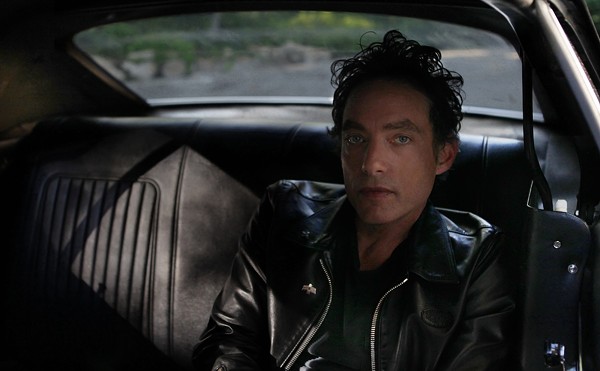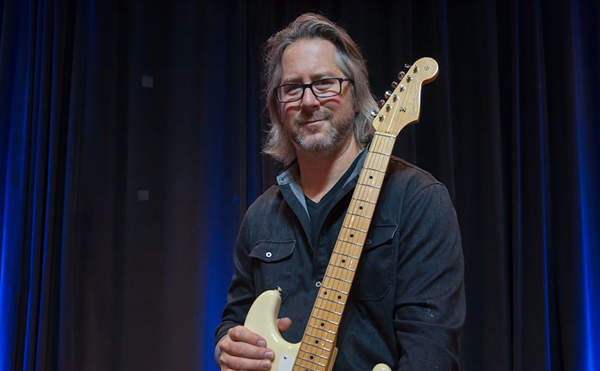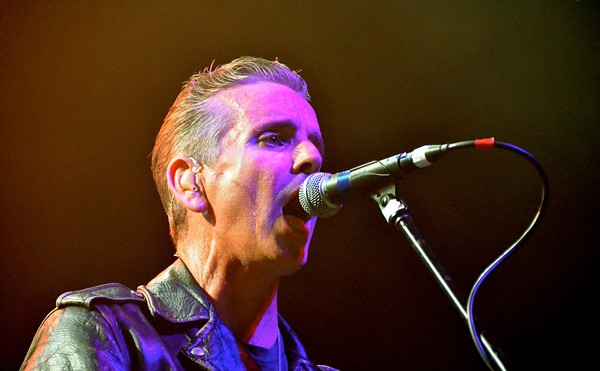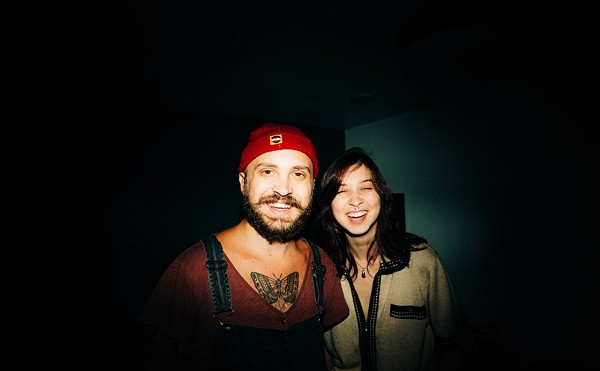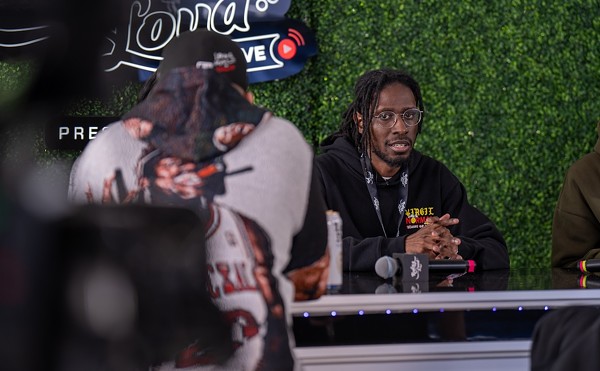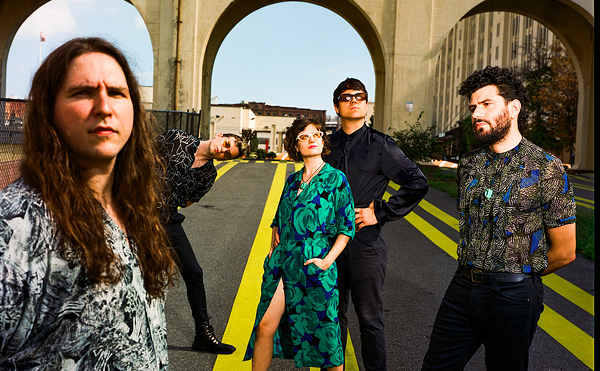What truly distinguishes The Books is their ability to shine intense emotional light on the most everyday moments and the extremely obscure instances. Ambiguous answering machine messages, meditation monologues, a hymn about math numbers. A song constructed out of a giant stash of old TalkBoys with little kids saying strange and threatening things. Even Ghandi makes an appearance. For The Way Out, out now on Temporary Residence Limited, The Books resume developing a creation that defies simple description. Guitarist and vocalist Nick Zammuto and cellist Paul de Jong build their distinct blend of texturing ominous ambiances and folk chaos with spoken word snatches that are sometimes hilarious, chilling, and hilariously spine-chilling.
Creative Loafing: Your songs bring together a wide array of sounds, words, and rhythms; how do you plan that? where do you start when you’re composing a song?
Nick Zammuto: It’s kind of emergent how we work, to use sort of a buzzword. There’s no plan to it. The inspiration comes from the sample library, which is Paul’s territory so I’ll let him describe that.
Paul de Jong: For this album it took several years for various reasons, to rake together a new and improved sample library. It was pretty big after [the last album 2005’s] Lost & Safe already, but it clearly needed refreshing. Since 2006 we’ve been collecting tons of new raw audio material on the road, cassettes mostly. Before that we really concentrated on LPs, but we really got into audio cassettes because they seemed to be readily available and going out of style, sad to say. So all that material gets digitized and then we carefully cut the samples out of there that have certain qualities that are, you know, musical qualities, emotional qualities. They have to have something that’s going to make them stay in the library. They have to earn their place. It’s kind of obvious at first listen when you listen through raw material. If it hits you that’s what we go for. So the library is a large part already pretty excellent material. Once I start sharing that with Nick, we get our own favorites and we have shared favorites. From that sub collection emerges the themes and the direction, or at least part of the direction, of the new record emerges.
In past albums there are a wide variety of spoken word samples, from people complaining about heart conditions, to Alan Watts and Salvidor Dali, but there are also snippets of conversation you might pass by walking down the street. Is there something common in all of these things for you that captures your attention?
PJ: I think they all share a human and humanistic quality in how they command in a very anonymous and, at the same time I think, universal way and that’s the way I listen to it. For a reference, Alan Watts, he has this really incredible musical voice and a way of putting things that you just like to believe whatever he says, there’s an enormous amount of humor in what he says, so he kind of marries the profound and the humor and that’s one of the guiding lines in what we do.
When you bring these samples into the production and you cut them up, is that an organic process or are things more planned?
NZ: It’s a much more chaotic process. It starts from a sea crystal that’s usually from the library and then there’s a body of sounds, that you kind of throw stuff at it to see what sticks, and so there’s a lot of trial and error at first in terms of where the track could go. It’s really unclear even in the beginning stylistically, but you try to see what else in the library will work with it or you try to play along with it in someway. Drop a rhythm along with it to see how it might bring out the musical qualities of the spoken word. See what works. From there you build up a body of sounds that you know are going to work together, and then it’s a matter of looking at that body of sound and figuring out where the beginning is and where the end is, and how to cut a path through it that makes everything fresh.
I noticed there’re a lot more electronic influences on The Way Out than in the past. Is that due to what’ve been listening to these days? What influenced that?
NZ: It’s interesting. Stylistically we work with whatever is laying around. I don’t think either of us are attached to any particular genre. We like elements of every genre. It’s more a matter of saving what works. If a country/western approach works for the track than why not. The library is full of all kinds of wonderful samples from synth sounds from the 70s, horn sections and weird instrumentation that we didn’t have access to before, so trying to figure out a way to use that material is part of the goal of this record.
When you have this raw material that you work with, do you ever find that there’s something you don’t have and you have to go out and seek that out?
NZ: Yeah in rare cases you have to go back in to the huge pile of tapes that we haven’t digitized yet to try and look for more of something. Something about that feeling of being incomplete is what drives the music forward all the time. You know that there’s a way to solve this problem but you can’t visualize it so it’s kind of like groping around in the dark, so that’s where the chaos comes in. You’re grasping for stuff and whatever you come up with, you try to fit it into place, and you know right away whether it’s going to work or not when you try to fit something into place. There’s no point in trying to force it. If it doesn’t want to go, it doesn’t want to go. But you end up, because you’re groping in the dark for solutions, you end up finding solutions that you would never find.
How do you know when you’re done? Or do you cut yourself off, stopping from reworking the song endlessly?
NZ: That’s such a tricky question. There’s a wall that you hit at some point, and it means you have to walk away from it for a while and come back and see if there’s something else you want to do, or you just call it done and move on. It’s mostly an emotional decision, like ‘Okay, enough is enough. This has all the detail that I want.’ At some point it’s…
PJ: Saturation in a way.
NZ: Saturation, but it’s also like a zero-sum game. All these elements can fit together in myriad of ways, probably as good as any other so you might as well just walk away. With this record I think our tolerance for walking away was much lower, in the sense that I think we spent a lot more time with these compositions before we let them go. There were several layers of revision that went into these that on previous record we would have released the earlier version.
Why is that?
NZ: I think it’s because of children. We’re both parents of young children.
I hear some children in the background right now.
NZ: They’re running around playing with their trucks. There’s something about really trying to make a living out of this. The kind of integrity that the music has, there’s no reason to take short cuts with it, because it’s only going to hurt us in the end. We have to really make sure that whatever we put out there has that integrity to it.
Of course, it’s your other child.
NZ: That’s not really a fair comparison, but yeah.
Before you mentioned ‘zero-sum,’ which leads me to one of my other questions. It has to do with numbers and the fixation that you seem to have with numbers. Can you talk about that?
NZ: I’ve been writing about this recently. You can find a lot of musings about it on our blog. Music is math to a large degree and you can think about it mathematically in a lot of ways. There are two minds about it. It has to work in an emotional way and it also has to work structurally in a way that allows for everything to seamlessly fit together. There are certain concepts, the more I compose the more little tricks I find, to help keep things together, and most of them involve, when you boil it down, it’s a pretty simple mathematical concept. It’s a very nerdy thing so it’s hard to talk about it without sounding a complete nerd, but it just excites me. I love numbers. For one of those tracks, “Beautiful People” is about my favorite irrational number, which is the twelfth root of two and has to do with the circle of fifths and how notes can be arranged through octaves and so it’s implicit in all of music but nobody ever talks about it because it’s kind of obscure when you write it down. It looks obscure when you write it down but the repercussions of it are very ubiquitous.
Did you study classical music at school?
NZ: No, I didn’t. Paul did. I studied chemistry in school.
Has Paul been your teacher along the way, having been trained classically?
NZ: Not from the theory standpoint, but definitely in terms of musicianship.
PJ: I think that our different corners of knowledge that we come from, it’s been a decade long we’ve been each others teachers. We are so far removed from our individual expertise that it’s incredibly intriguing. I think what binds us together is this real interest in making this kind of art that works in a particular way. We saw the potential of that in these differences in expertise.
When making an album, you’re creating a landscape, where you get together all these elements, and when you get to the finished product do you ever wonder what this place would look like? What would The Way Out look like?
NZ: It’s funny you say that. We had this feeling early on in the record. We’re pushing each track as far as we can and that means that the style and the sound of the tracks diverge a lot from one another. They become like foreign places at some point, but still, there’s something within them that connects them all. The record has to work as a whole. We started to think of each track as cities that are separated by many hundreds of miles of open space, so that you can definitely get from one to the other. The character of each one is very much it’s own thing. It’s evolving like it’s own island in a way.
Conducted by Sarah Gerard///Organized & Spit-Shined by Shawn Goldberg




